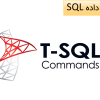
پیشبینی و پیشگوئی دو مفهوم مرتبط در تجزیه و تحلیل داده و یادگیری ماشینی هستند، اما معانی متفاوتی دارند.
پیشبینی فرایند تخمین یا پیشبینی مقدار آینده یک متغیر بر اساس داده های پیشین است. در پیشبینی، از مدل ها و تکنیک های آماری برای تحلیل روندها، الگوها و روابط در داده ها استفاده میکنیم و مقدار جدید تولید می کنیم. پیشبینی ها معمولاً به صورت احتمالی هستند و شامل برآورد عدم قطعیت مانند بازه های اطمینان یا بازهه ای پیشبینی میشوند.
به عنوان مثال، یک کسب و کار ممکن است با استفاده از پیشبینی به پیشبینی فروش یا تقاضای یک محصول در آینده بر اساس داده های فروش گذشته، شاخص های اقتصادی و سایر عوامل مرتبط دست یابد. یک هواشناس ممکن است با استفاده از داده های هواشناسی گذشته و شرایط جوی فعلی به پیشبینی احتمال بارش یا برف در روزهای آینده بپردازد.
از سوی دیگر، فرآیند پیشگویی یک نتیجه خاص یا مقداری برای یک متغیر بر اساس یک مجموعه از متغیرهای ورودی یا ویژگی ها است. در پیشگویی، ما به طور عمومی از الگوریتم ها و مدل های یادگیری ماشینی برای یادگیری الگوها و روابط در داده ها و پیشگویی نقاط داده جدید یا نامرئی استفاده میکنیم. پیشگویی ها به طور عمومی به صورت قطعی هستند، یعنی یک مقدار یا نتیجه واحد فراهم می کنند.
به عنوان مثال، یک شرکت کارت های اعتباری ممکن است با استفاده از یادگیری ماشینی به پیشگویی بپردازد که آیا یک مشتری بر اساس امتیاز اعتباری، درآمد و سایر عوامل به احتمال زیاد پرداخت خود را انجام نمی دهد یا نه . یک محقق پزشکی ممکن است با استفاده از یادگیری ماشینی به پیشگویی خطر بروز یک بیماری خاص بر اساس تاریخچه پزشکی، داده های ژنتیکی و عوامل سبک زندگی پردازد.
به طور خلاصه، پیشبینی در مورد پیشبینی مقدارهای آینده یک متغیر بر اساس داده های تاریخی و مدل های آماری است، در حالی که پیشگوئی در مورد پیشبینی یک نتیجه خاص یا مقدار بر اساس یک مجموعه از متغیرهای ورودی و مدل های یادگیری ماشینی است.
Forecast and predict are related concepts in data analysis and machine learning, but they have different meanings.
Forecasting is the process of estimating or predicting future values of a variable based on historical data. In forecasting, we use statistical models and techniques to analyze past trends, patterns, and relationships in the data and generate predictions or forecasts for future values. Forecasts are typically probabilistic in nature and include estimates of uncertainty, such as confidence intervals or prediction intervals.
For example, a business might use forecasting to predict future sales or demand for a product based on historical sales data, economic indicators, and other relevant factors. A weather forecaster might use historical weather data and current atmospheric conditions to predict the likelihood of rain or snow in the coming days.
On the other hand, prediction is the process of predicting a specific outcome or value for a variable based on a set of input variables or features. In prediction, we typically use machine learning algorithms and models to learn patterns and relationships in the data and make predictions for new or unseen data points. Predictions are typically deterministic in nature, meaning they provide a single value or outcome.
For example, a credit card company might use machine learning to predict whether a customer is likely to default on their payments based on their credit score, income, and other factors. A medical researcher might use machine learning to predict the risk of a patient developing a particular disease based on their medical history, genetic data, and lifestyle factors.
In summary, forecasting is about predicting future values of a variable based on historical data and statistical models, while prediction is about predicting a specific outcome or value for a variable based on a set of input variables and machine learning models.
 بستیفای | مرجع فروش فایل های کاربردی در حوزه کسب و کار
بستیفای | مرجع فروش فایل های کاربردی در حوزه کسب و کار

